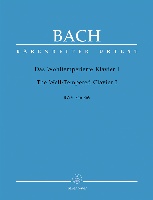Gott der Herr ist Sonn und Schild (God the Lord is sun
and shield), BWV 79, is a church cantata by Johann
Sebastian Bach. He composed it in Leipzig in 1725 for
Reformation Day and first performed it on 31 October
1725.
Bach composed the cantata for the Reformation Day. The
prescribed readings for the feast day were from the
Second Epistle to the Thessalonians, "be steadfast
against adversaries" (2 Thessalonians 2:3–8), and
from the Book of Revelation, fear God and honour him
(Revelati...(+)
Gott der Herr ist Sonn und Schild (God the Lord is sun
and shield), BWV 79, is a church cantata by Johann
Sebastian Bach. He composed it in Leipzig in 1725 for
Reformation Day and first performed it on 31 October
1725.
Bach composed the cantata for the Reformation Day. The
prescribed readings for the feast day were from the
Second Epistle to the Thessalonians, "be steadfast
against adversaries" (2 Thessalonians 2:3–8), and
from the Book of Revelation, fear God and honour him
(Revelation 14:6–8). An unknown poet was not
concerned about the readings, but did justice to the
festive occasion, beginning with a quotation from Psalm
84 (Psalms 84:11), and including the first stanza from
Martin Rinckart's hymn "Nun danket alle Gott" and as
the closing chorale the final stanza of Ludwig
Helmbold's hymn "Nun laßt uns Gott dem Herren".
Bach first performed the cantata on 31 October 1725. He
performed it again, probably in 1730, when he
re-orchestrated it, doubling the oboes by flutes and
assigning a flute as the obbligato instrument in the
alto aria. He used the music of the opening chorus and
the duet again in his Missa in G major, BWV 236, and
the music of the alto aria in his Missa in A major, BWV
234.
John Eliot Gardiner, who conducted the cantatas for
Reformation at the Schlosskirche, Wittenberg where the
Reformation began, describes the opening chorus as a
ceremonial procession, and hears the "insistent drum
beat" going along with the "fanfares of the high horns"
as a "the hammering of Luther’s theses to the oak
door at the back of the church". The instrumental
ritornello introduces two themes: "a festive,
march-like theme for the horns and timpani, and a more
lively counter-theme that develops from a note that is
heard seven times. The following aria expresses similar
ideas in a personal way, "tranquil and individual". In
movement 3, the first chorale, Bach uses the first
theme of the opening again, simultaneously with the
chorale tune. Helmuth Rilling notes the unity of topic,
praise and thanks to God, for the first three
movements. Gardiner assumes that the sermon may have
followed the chorale.
The only recitative, sung by the bass, mentions the
reason for thanks on this occasion. "Du hast uns durch
dein Wort gewiesen" (You have instructed us through
your word), addresses "the basic issues of the
Reformation", as Rilling points out. Gardiner hears in
the "innocent" duet of the second part "a pre-echo …
of Papageno and Papagena, a Mozartian impression,
reinforced by the hint of Eine kleine Nachtmusik in the
violin ritornelli". The cantata ends with a four-part
setting of the second chorale, asking for the gifts of
truth and freedom.
Although originally scored for three vocal
soloists—soprano, alto and bass—a four-part choir,
two horns, timpani, two flauto traverso, two oboes, two
violins, viola and basso continuo, I created this
arrangement for Winds (Bb Trumpet, Flugelhorn, Flute &
Oboe), Strings (2 Violins, Viola & Cello) & Concert
(Pedal) Harp.





 Faire un don
Faire un don